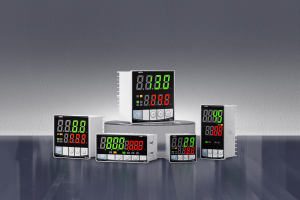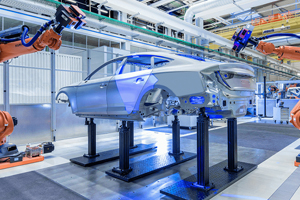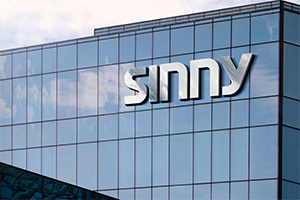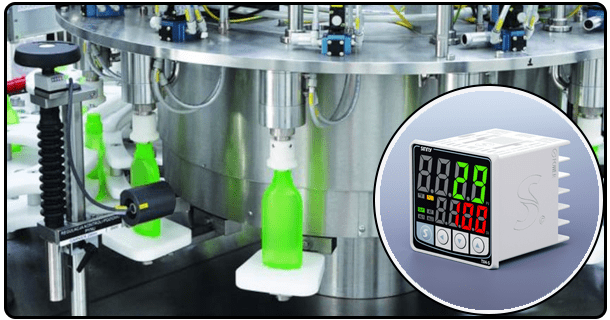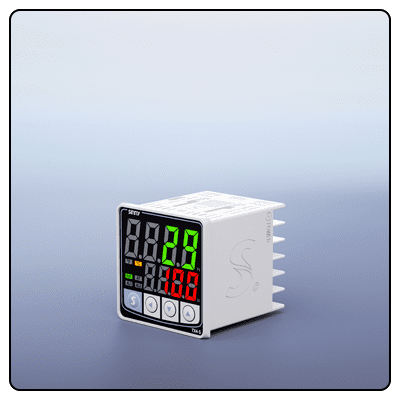The PID parameters for temperature control: tuning guide & industrial applications
Learn how to tune PID temperatures: Ziegler Nichols methods; application-specific parameters for ovens and reactors (such as those used in a nuclear power plant); MATLAB optimization; and troubleshooting oscillations. Included are industrial case studies.
I. I. Introduction to the Precision Balancing Act
In industrial processes such as semiconductor manufacture, stability is required. Suboptimal PID parameter values can lead to catastrophic wafer failures of $500k. The three variables (Proportional Integral Derivative), form a mathematical structure that corrects temperature errors through continuous error calculations. According to International Society of Automation, properly tuned PID circuits can reduce energy loss by up to 18% for thermal systems and prevent hazardous oscillations within exothermic reactions ( ISA 88 Standard).
II. The Core Parameters of PID Decoded
1. Proportional Gain
Function : Produces corrective output that is proportional the instantaneous mistake (e.g. 10degC deficiency - 80% of heater power).
Risk: Excessive gain induces destructive oscillations; insufficient gain causes sluggish response
Rule Of Thumb Initial Setting = 100%/Process Gain ( Control Guru).
2. Integral Time I
Function Eliminates persistent off by adding historical errors
Unit: Minutes/repeat (reset rate inverse)
Constraint : Disable on/off valves in order to avoid windup
3. Derivative Time (D)
Function : Calculates future errors based on rate of change (slope).
Limitation of Application: In noisy environments, the signal is suspended (over 1% variance).
III. Tuning Methodologies Compared
Method Error Tolerance Process requirements Industrial Case
Ziegler-Nichols +-5% оа инормаии Packaging machines
Lambda Tuning +-2% Time constants that are known HVAC chillers
IMC +-1% First-principles model Pharmaceutical reactors
Auto-Tune Relay +-0.5% Baseline operation with stable baseline Semiconductor furnaces
Source: Control Global Tuning Benchmark Study
IV. Application-Specific Parameters
1. Slow-Response Systems (Kilns, Ovens)
Typical settings: D=0, P=3-8 and I=5-15 minutes
Rationale: Thermal inertia negates derivative action
Validation : Ceramic Kiln Stability improved from +-15degC - +-2degC when P=5.2 and I=8 minutes ( Ceramic Industry Journal).
2. Fast-Response Systems (Injection Molding)
Typical settings : P=15-30 min, I=0.10-0.5 min, D=1-3
Critical Adjustment: Derivative dampens overshoot during rapid heating
3. Nonlinear Processes: Exothermic Reactors
Strategy: Gain scheduling with temperature-dependent parameters
Formula: P(th) = 10 - 0.02th (th = temperature in degC)
V. Step-by-Step Ziegler-Nichols Tuning
Closed-Loop Protocol:
Set I=0 and D=0 to disable I-D actions
Increase P incrementally until oscillations are sustained
Record:
Ku
Pu
Calculate:
P = 0.6 x Ku
I = 2 / Pu
D= Pu / 8
NASA Technical Memorandum No. 112868
VI. Advanced Optimization Techniques
1. Cascade Control Architecture:
Inner Loop Flow/Temp: P=0.8 and I=0.05 min
Outer Loop Master Temp: (P=4.2 min, I=2.1 minutes)
Application: Glass tempering furnaces requiring +-3degC uniformity
2. Anti-Windup Compensation:
Back-Calculation Formula: I_adjusted = I_raw / (1 + K_aw x error)
Prevents integral saturation during output limits
3. Noise Filtering:
First-Order Lag: t_f = 2 x (noise period)
Caution: Over-filtering introduces dead time
VII. Troubleshooting Guide
Symptom Root Cause Corrective Action
Oscillations Over-P-Gain Increase D by 25% and reduce P by 25%
Persistent offset Not enough I-action Half integral time
Recovery from Slow Disturbance Conservative P Increase the P from 15-30%
Control valve Chatter High D with Noise Implement moving average filter by disabling D
Control Station Diagnostic Handbook Authority Reference
VIII. Software Tools & Calculators
MATLAB PID Tuner: Gradient descent optimization for MIMO systems
Omega iSeries : cloud-based autotuning and NIST traceable calibration
Free Online Simulator: PIDLab Interactive Tool
Rule of Thumb Calculator :
matFu Zhi Dai Ma P_initial = 100 / Process_Gain; I_initial = 3 * Process_Dead_Time;
IX. Conclusion: The Art of Scientific Tuning
For precise temperature control, it is important to match PID parameters and process dynamics. Slow thermal systems require aggressive integral actions while rapid-reacting processes need derivative dampening. Implement cascade control, with anti-windup, for mission-critical systems, and validated to ISA-88. ControlGlobal highlights that continuous loop performance monitors reduce energy costs in thermal systems by 12-22%, turning theoretical tuning into quantifiable operational excellence.
- How to wire a PID temperature controller: diagrams, safety & step-by-step guide
- PID Smoker Control Guide (2024): Setting up, tuning & best models


